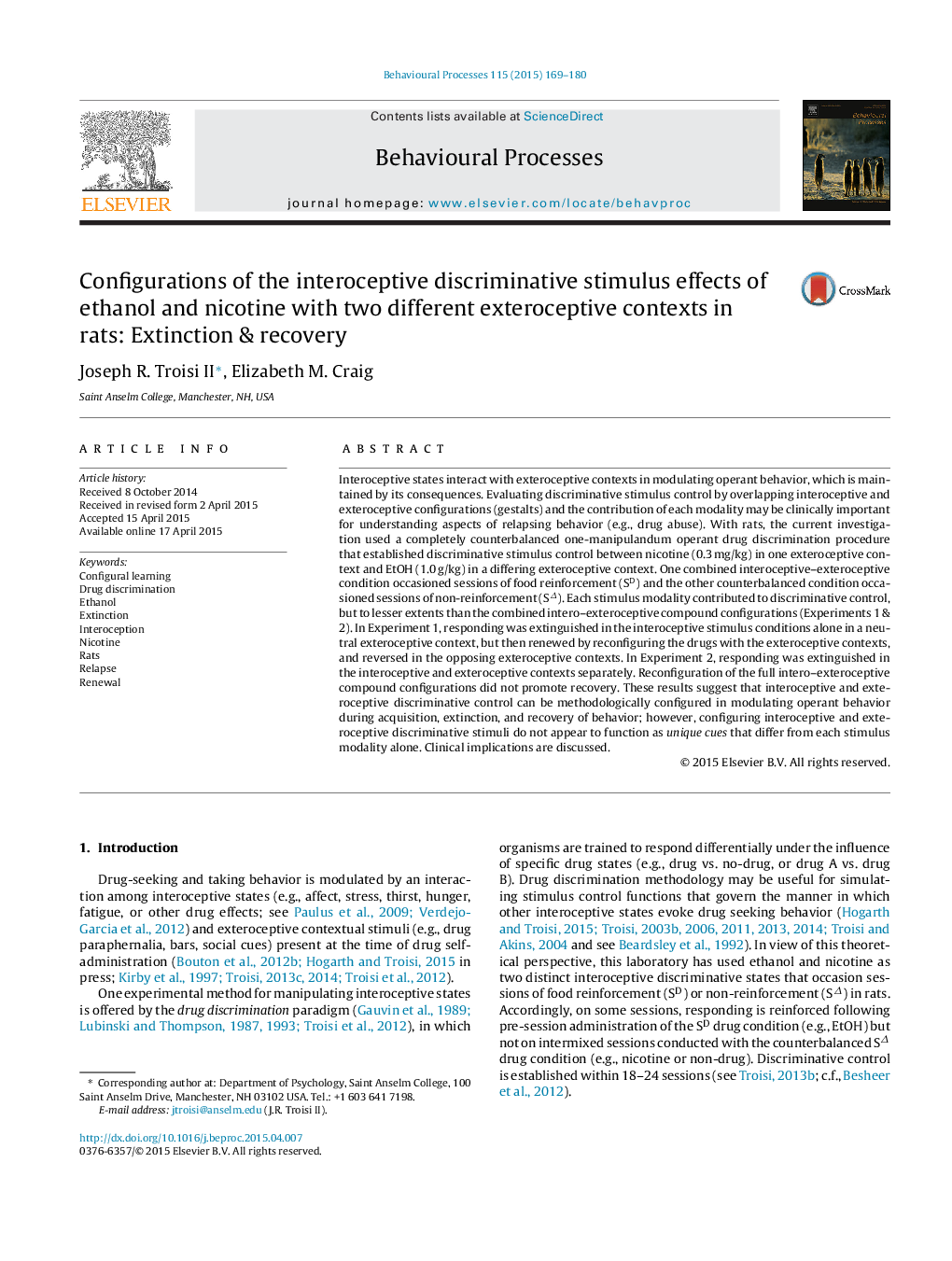| Article ID | Journal | Published Year | Pages | File Type |
|---|---|---|---|---|
| 2426607 | Behavioural Processes | 2015 | 12 Pages |
•Rats responded differentially among two distinct intero–exteroceptive conditions.•Extinction in the interoceptive conditions was renewed with the exteroceptive conditions.•Reversal of interoceptive stimulus control was fostered by the exteroceptive contexts.•There were individual differences in responsiveness to the interoceptive and exteroceptive conditions during extensive extinction.•Interoceptive and exteroceptive stimulus control redundantly may not form a unique cue.•Clinical translations are entertained for drug abuse treatment involving extinction.
Interoceptive states interact with exteroceptive contexts in modulating operant behavior, which is maintained by its consequences. Evaluating discriminative stimulus control by overlapping interoceptive and exteroceptive configurations (gestalts) and the contribution of each modality may be clinically important for understanding aspects of relapsing behavior (e.g., drug abuse). With rats, the current investigation used a completely counterbalanced one-manipulandum operant drug discrimination procedure that established discriminative stimulus control between nicotine (0.3 mg/kg) in one exteroceptive context and EtOH (1.0 g/kg) in a differing exteroceptive context. One combined interoceptive–exteroceptive condition occasioned sessions of food reinforcement (SD) and the other counterbalanced condition occasioned sessions of non-reinforcement (SΔ). Each stimulus modality contributed to discriminative control, but to lesser extents than the combined intero–exteroceptive compound configurations (Experiments 1 & 2). In Experiment 1, responding was extinguished in the interoceptive stimulus conditions alone in a neutral exteroceptive context, but then renewed by reconfiguring the drugs with the exteroceptive contexts, and reversed in the opposing exteroceptive contexts. In Experiment 2, responding was extinguished in the interoceptive and exteroceptive contexts separately. Reconfiguration of the full intero–exteroceptive compound configurations did not promote recovery. These results suggest that interoceptive and exteroceptive discriminative control can be methodologically configured in modulating operant behavior during acquisition, extinction, and recovery of behavior; however, configuring interoceptive and exteroceptive discriminative stimuli do not appear to function as unique cues that differ from each stimulus modality alone. Clinical implications are discussed.
